Distant Era is about images and stories of other times and places. Tabletop and role-playing games are gateways to immersion in fantasy, history, science-fiction, and mythology, and they’ve been a way of life for me, personally and professionally. With that said, here’s a hobby post about how I’ve occupied some free time in the pandemic and how they were photographed.
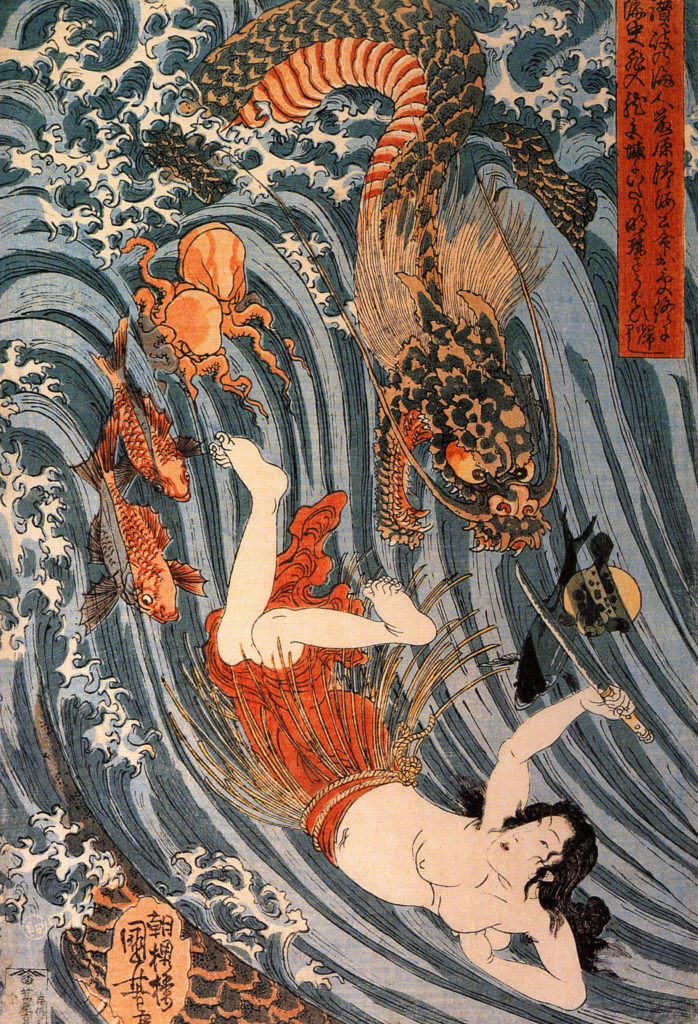
The kami are the divine entities of Shinto, and they feature prominently in the Rising Sun tabletop game designed by Eric M. Lang and produced by CMON.
I love games with historical and/or mythological themes, especially when the artists and designers who created the game put detail into their concepts so that by playing the game you come to learn something about history, mythology, culture, etc. I knew very little about Japan when I received Rising Sun in 2018, and as I have painted the pieces of the game, I have learned more and more. In 2018, I painted all the oni, dragons, and yokai pieces that came with the game. After a yearlong hiatus from this project, I found time to work on it again in my free time during the pandemic, and in December and January of 2020–21, I painted and learned about the following seven kami, whose figures came from the Kami Unbound expansion to Rising Sun. The following is what I painted, and what I learned from random internet sources, so please take any broad strokes mythology here as a starting point for actual, detailed research.
Ryujin
The sea god Ryujin is most often depicted as a dragon, as in the nineteenth-century woodblock painting above, by Utagawa Kuniyoshi. The art for the game (by Adrian Smith) depicts Ryujin in a human-like form, though it maintains the same coloring as Utagawa Kuniyoshi’s art—the backs of his hands and his tail are green, and his chest is orange and striped. My goal was to paint Ryujin’s robes like a wave of the sea, starting with green at the bottom and working up to bright blue and white to represent the foamy crest. In the side view below, the bottom of his sleeve transitions through the marine spectrum, from green to white at the top. I considered adding further decoration to his wave-robes but worried that it might be too much.
Raijin
I had always been impressed with the sculpt for Raijin, the kami of lightning, thunder, and storms, so I wanted to give him a shot after having tackled Ryujin. The drums from which he creates his thunder made him look like an intimidating piece to take on, and there was a great deal of detail involved, from the stitches on the sides of the drums to his tiny orange eyes and white teeth to the patterns on his clothing to the tamoe symbols on the drums.
Raijin is often pictured with Fujin, the kami of wind, as in this seventeenth-century art, Fūjin-raijin-zu, by Tawaraya Sōtatsu. As the story goes, the first gods, Izanagi and Izanami, had many children, but the last of these, the incarnation of fire, Kagutsuchi, killed its mother Izanami. In grief, Izanagi went to the underworld, Yomi, to bring Izanami back, but her undead, decaying corpse crawled with demons, and Izanagi fled and blocked the entrance to Yomi with a boulder. However, some oni and demons (including Raijin and Fujin) escaped through a crack. This is how there came to be thunder and wind.
Adrian Smith’s art for the Raijin uses a similar pose to the seventeenth-century art below.
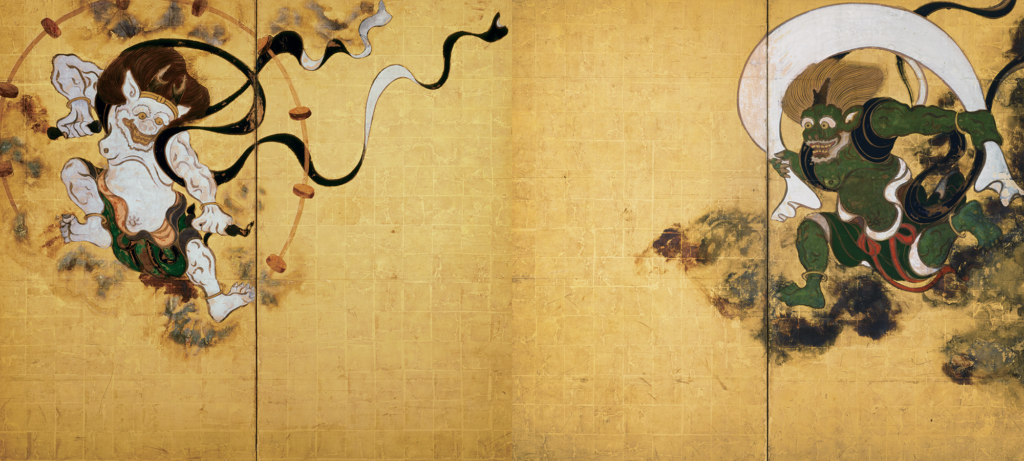
Hachiman
Next, I moved on to Hachiman, the kami of archery and warfare. Straps are the bane of my existence, and Hachiman had lots of straps, so I wanted to have that one behind me. The two great banes of my existence in painting miniatures are straps and things I cannot see or reach with a brush (yet which need to be painted anyway). Here he is as depicted in the game art.
Susanoo

Susanoo is the storm god. In one story, he was created when the aforementioned Izanagi departed the underworld, Yomi. In his grief for the death of Izanami, Izanagi wiped away a tear from his left eye, which became Amaterasu, goddess of the sun, a tear from his right eye that became Tsukuyomi, god of the moon, and then he blew his nose, which became Susanoo.
Susanoo managed to get himself exiled from the heavens, and in his wanderings he encountered a husband and wife whose children (except one) had been eaten by an eight-headed dragon called Yamata no Orochi. Susanoo made a deal that if he defeated the dragon, he could marry their last remaining daughter. He then set out eight buckets of sake, the dragon came, drank, got drunk, and Susanoo cut off all of its heads. He discovered the sword Kusanagi within the serpent, and this became one of the Imperial Regalia of Japan. So he’s kind of a big deal. Not to mention difficult to paint.
Artist Adrian Smith’s game illustration appears to come directly from the nineteenth-century woodblock print by Utagawa Kuniyoshi—checkered sleeves, crown, mustaches, and all. The dragon heads on the figure are the same shapes as the head in the illustration. I had never freehanded checker patterns before, and doing these, as well as the patterns on Susanoo’s upper arms and shoulders, the net holding the dragon heads, and the detailing Susanoo’s belt were very challenging tasks at my level of skill.
Fujin
I knew Fujin, kami of the wind, would be trouble for all the freehand designs on the giant bag of wind he carries. I read an interesting anecdote that suggested the iconography of the bag of the world’s wind started in Greece with Boreas, traveled down the Silk Road, and through a sort of mythological game of telephone, ended up carried by Fujin.
Freehanding the patterns on the bag of wind took some time, but the real challenge was painting under the miniature (things I can’t see, things I can’t reach). This was one where the overall shape of it was difficult to discern until I started painting sections of it; it was initially difficult to see where the bag began and ended, and this clarified the more I filled it in. Here is the game art upon which the sculpt for the figure was based.
Tsukuyomi
The moon god Tsukuyomi offered some respite from the crazy details on the other minis.
I could find little information on Tsukuyomi. According to one legend, he presided over the heavens when his sister Amaterasu was away, and on one such occasion he murdered the goddess of food because he was disgusted with the way food poured out from her every orifice. The resulting fallout between Tsukuyomi and his sister Amaterasu was so great that they separated forever, and thus we have day and night.
I imagine this is why Tsukuyomi is depicted as such a frightening figure in the game’s art, with blood dripping down his hand and weapon.
Amaterasu
I finished with the head of the pantheon, Amaterasu, goddess of the sun.
Most of the challenges in painting Amaterasu had to do with the sun disk facing the figure’s back, below the shoulders (things I can’t see, things I can’t reach). Tiny, colored skulls in her necklace were a little challenging, and I never learned what they represent. One source suggested that early worship of Amaterasu may have involved snakes, which is perhaps why she holds a snake. The face was also difficult to detail, and I tried to match the game art as well as I could.
Photographing the Kami
This wouldn’t be a Distant Era post without a little talk about the images themselves.
I photographed the kami using an inexpensive lightbox I bought on Amazon in preparation for a miniature photography workshop I taught at Gen Con 2019. The lightbox I have comes with a couple plug-in LED lights, which you can position as you please, casting the light on the diffusion material of the enclosure, softening the light that reaches the figure. As much as I love shooting with flash, the continuous light of the LEDs has proven more efficient and reliable in terms of achieving proper exposure in my environment, so long as the other ambient lights in the room are turned off and not bleeding in yellow-orange hues of tungsten light. For photographing miniatures, I prefer a single light from above, just in front of the figure (paramount lighting), but there’s no right way to light them. I like to light from above because it creates shadows and highlights evenly across the figure. Lately, I’ve found that this creates the shadows that I might not have painted in.
I used to use a 100 mm macro lens to photograph miniatures. I don’t do that anymore for a few reasons: at a certain proximity, I think you see too much; the depth of field is often very narrow even at smaller apertures, and miniatures striking a dynamic pose may see weapons, legs, arms, etc., fading out of focus into the background; finally, I’d need to get pretty close to the figures to photograph them, and with that limited depth of field, focus could be a struggle.
For these, I’m using an 85 mm lens on a tripod, shooting at f/8 so that every miniature remains sharp and in focus from top to bottom. I set my ISO to 100 for minimal grain, and I set my shutter speed to .4 seconds. Since that’s a long exposure for what we’re doing, I put my camera on a two-second timer so that the camera had two seconds to stop moving after I pressed the trigger before it captured the image.
A word about backgrounds: In summer 2020, I photographed the Seven Lucky Gods on a black background in my lightbox. I love low-key lighting and shadow (I also love that it hides my mistakes), but I didn’t think it was the best choice for photographing the kami or the samurai clans. In the images below, you can see the high-key white lightbox background and the low-key black one. Initially, I shot the kami on black, but the shadows were so intense that I stretched a paper towel in front of them to fill them in somewhat. That worked, but there were still details that were hard to see, like Raijin’s eyes, for instance. I decided to go with white so that all the details could be seen. After all, I’d been getting more accurate with the brush, so it made sense to show that detail. I considered adding a number of different backgrounds, which I’ve seen many painters do to impressive effect, but if I’m honest with myself, I would still be looking for the perfect background right now, and I wouldn’t have shot them at all. The white background served to show the details and gave a clean, minimal look.
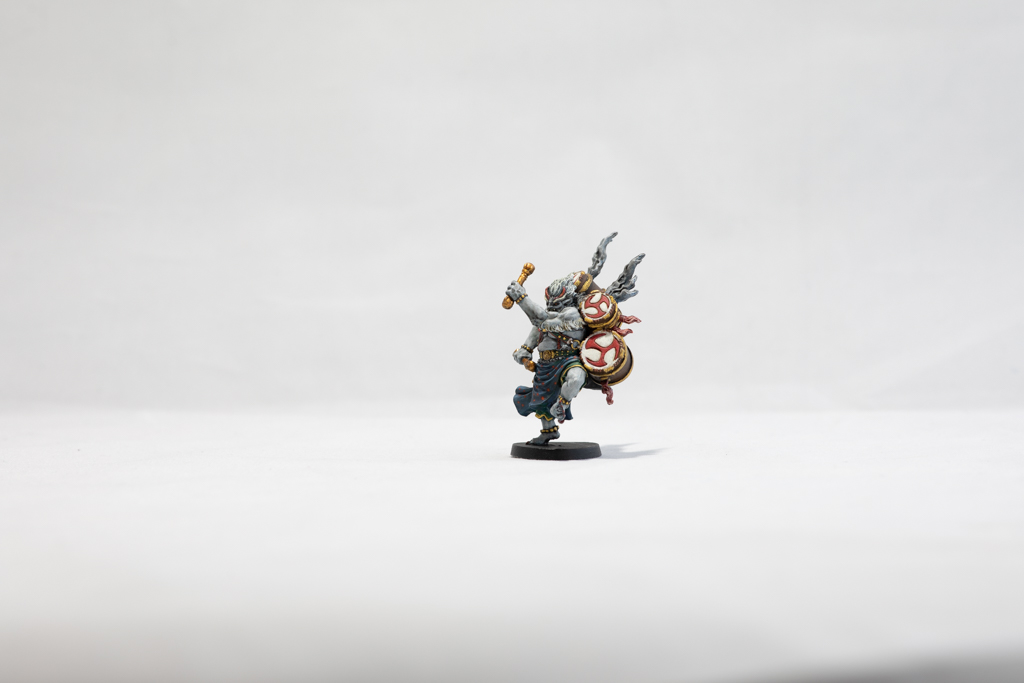
Lightbox with white background 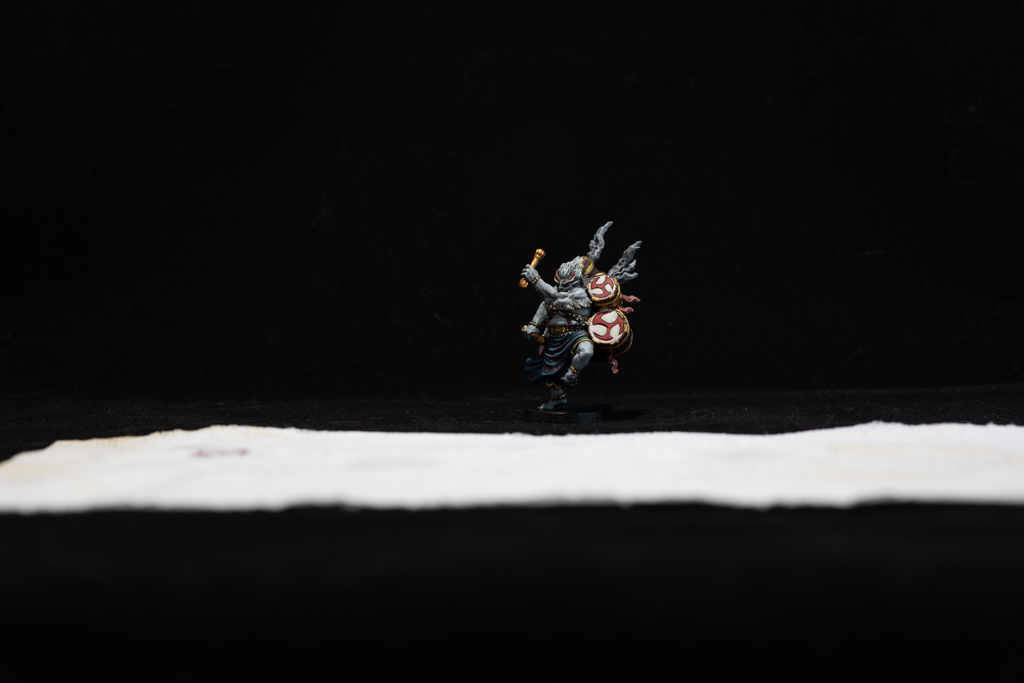
Lightbox with black background and paper towel reflector 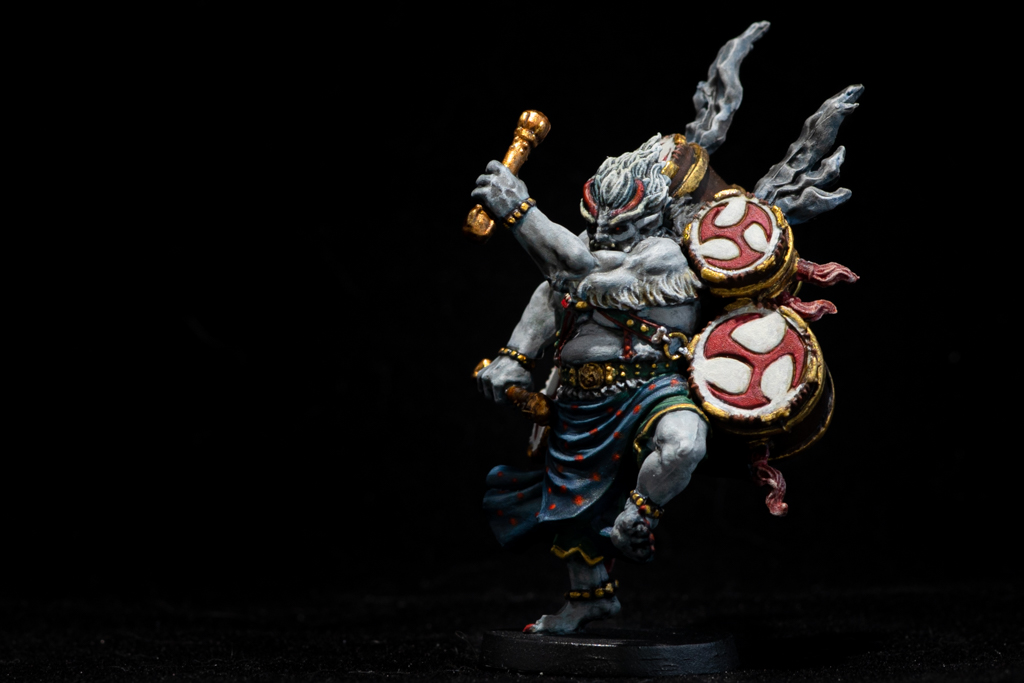
Black background image cropped
Progress and Process
I worked on these figures from late December 2020 to late January 2021. Each section of Rising Sun that I have painted has been the best work I have done up to that point. When I painted the monsters for the game in 2018, it was my first time painting large miniatures and the best miniatures I had ever done. When I painted the Seven Lucky Gods from Rising Sun in summer 2020, those were the best I had done. The kami probably have more details than the Lucky Gods. The next figures I would paint, the very first of the clans, would be even more detailed.
And yet, there came a point on each one where I felt like I had totally failed and should start over or stop. It’s been interesting, perhaps even helpful, to observe that part of the process from week to week. It becomes familiar after a while. Never pleasant, but familiar, and in recognizing it as familiar, you start to see it’s just part of working hard. Here are some of those early steps when things just didn’t look all that swell, followed by the final result.



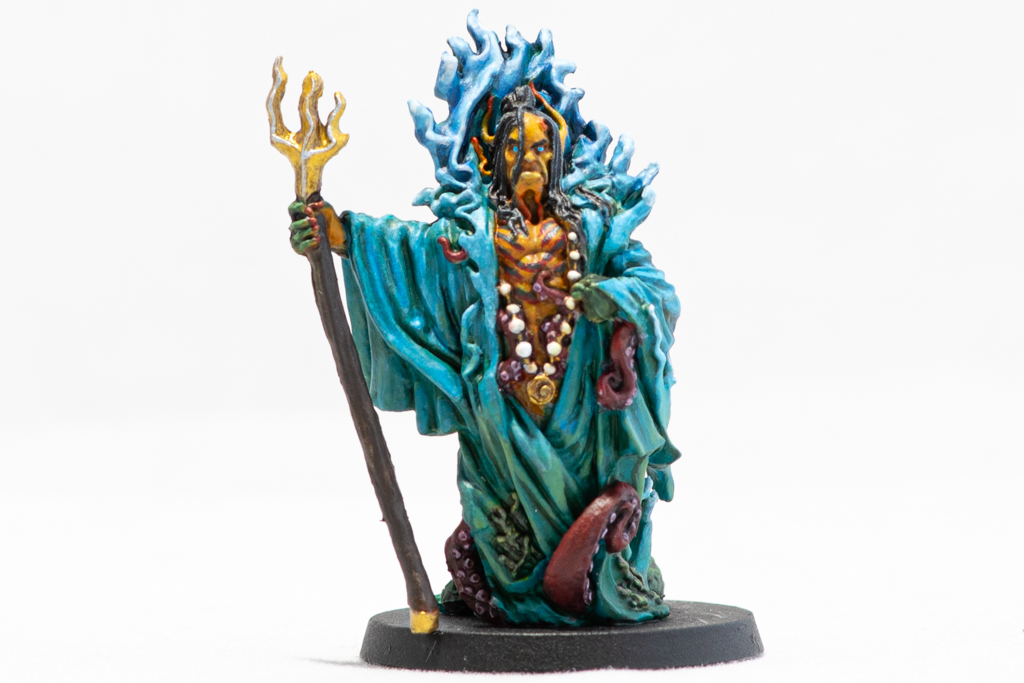
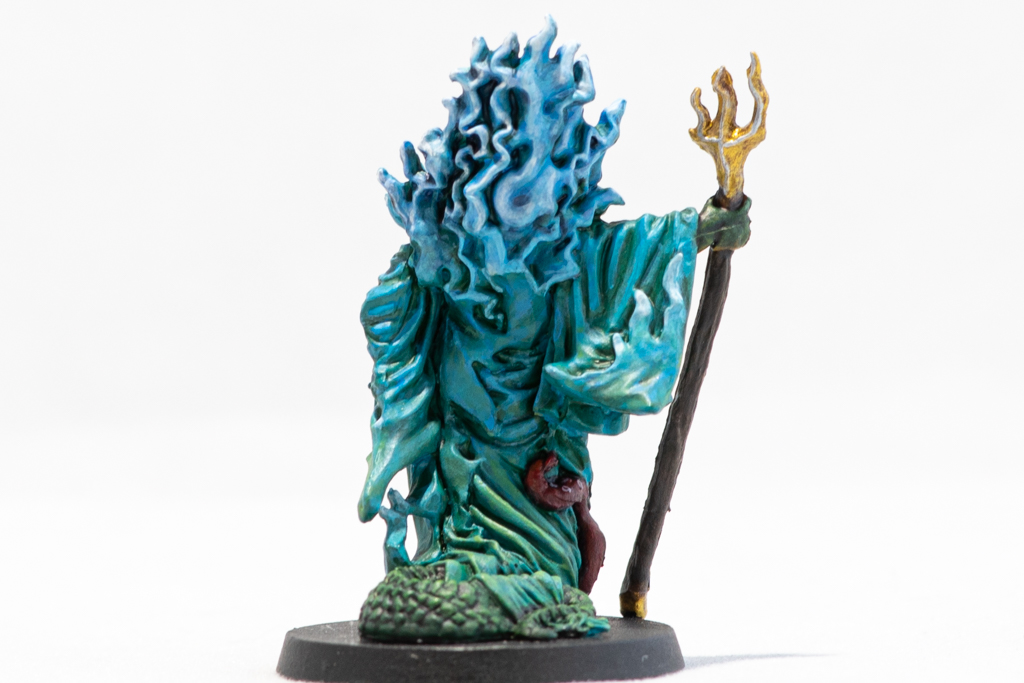
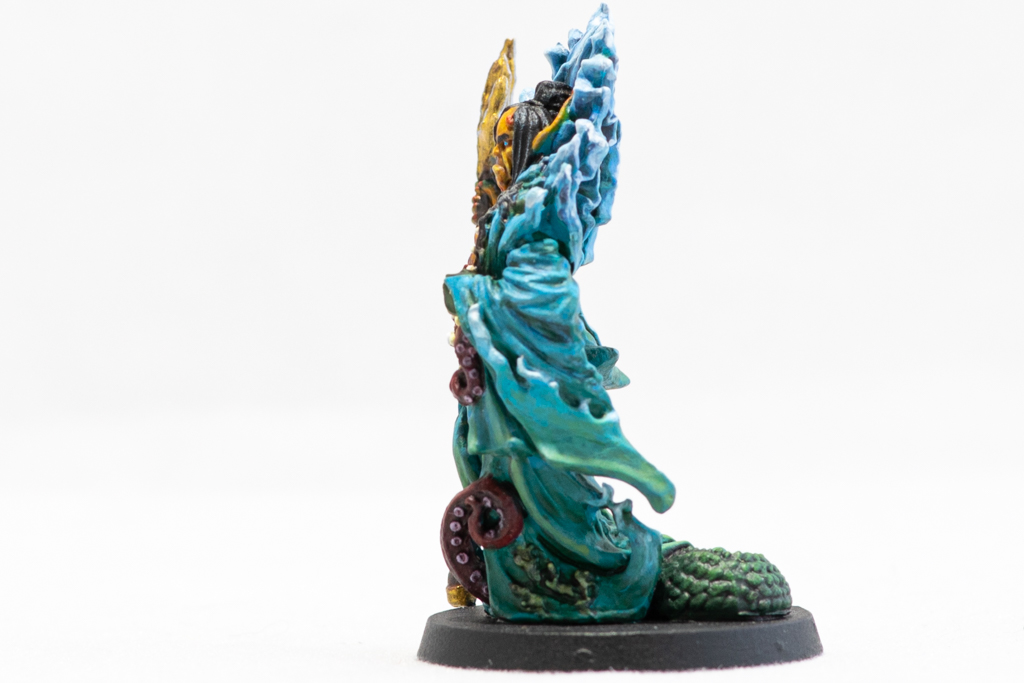
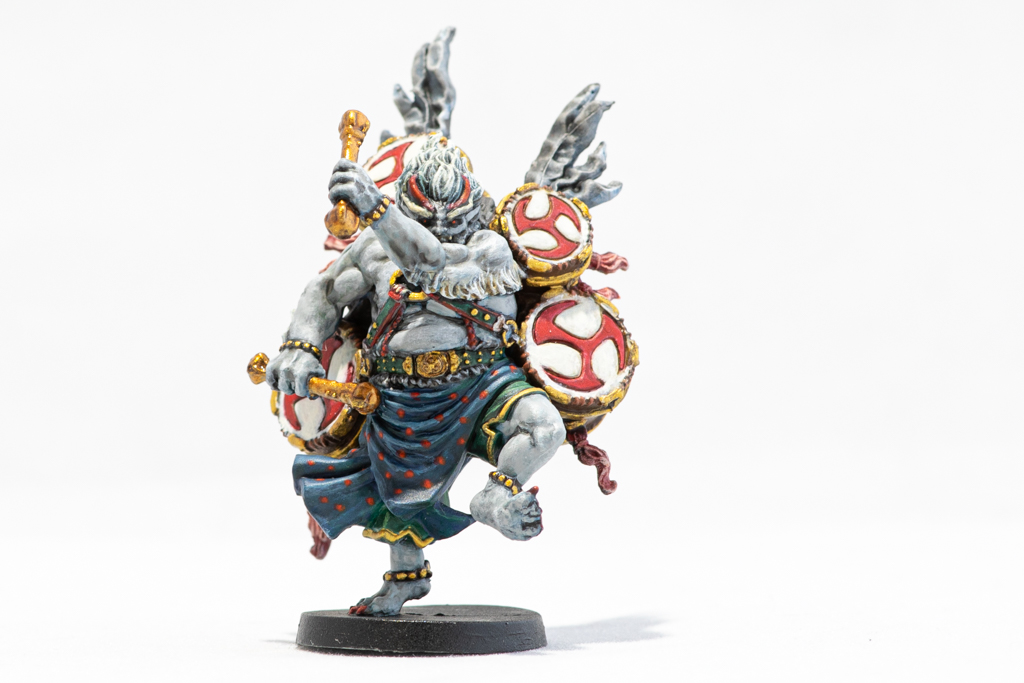
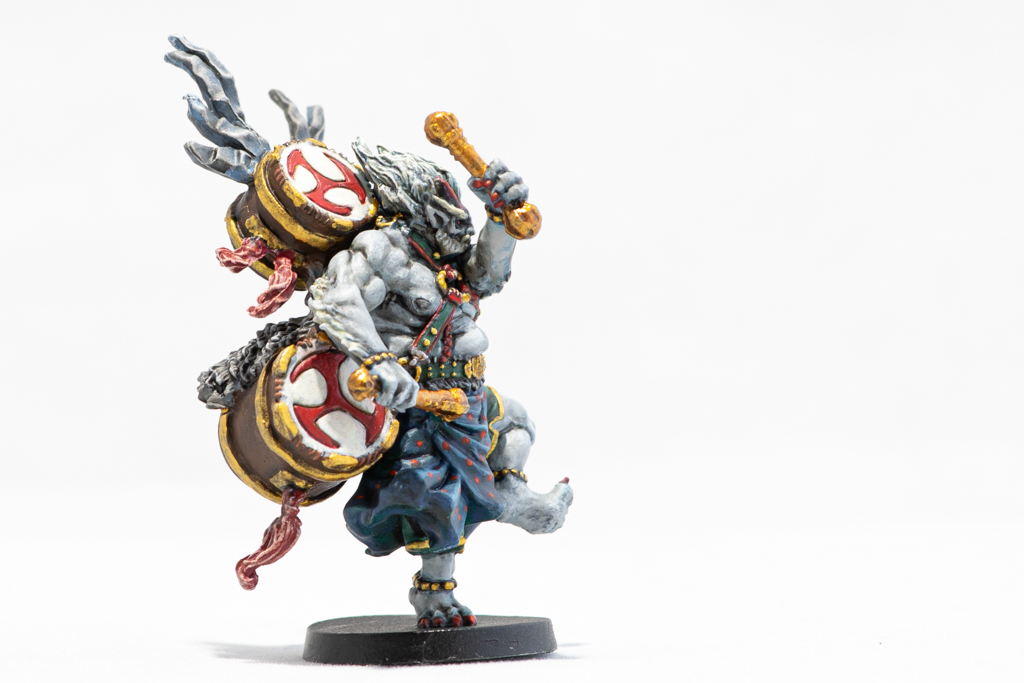
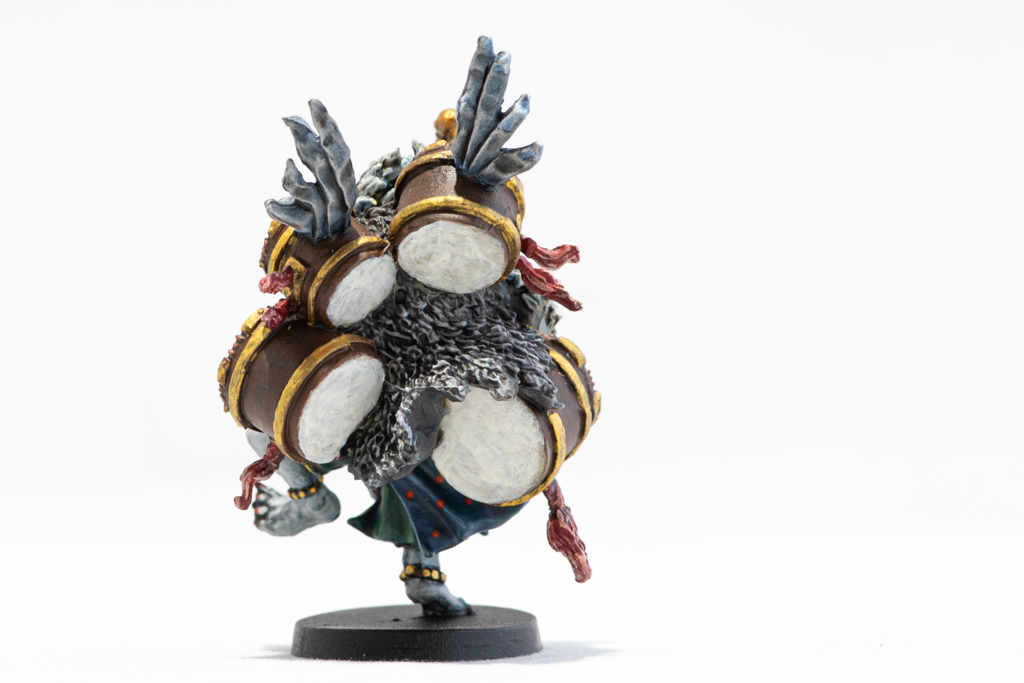
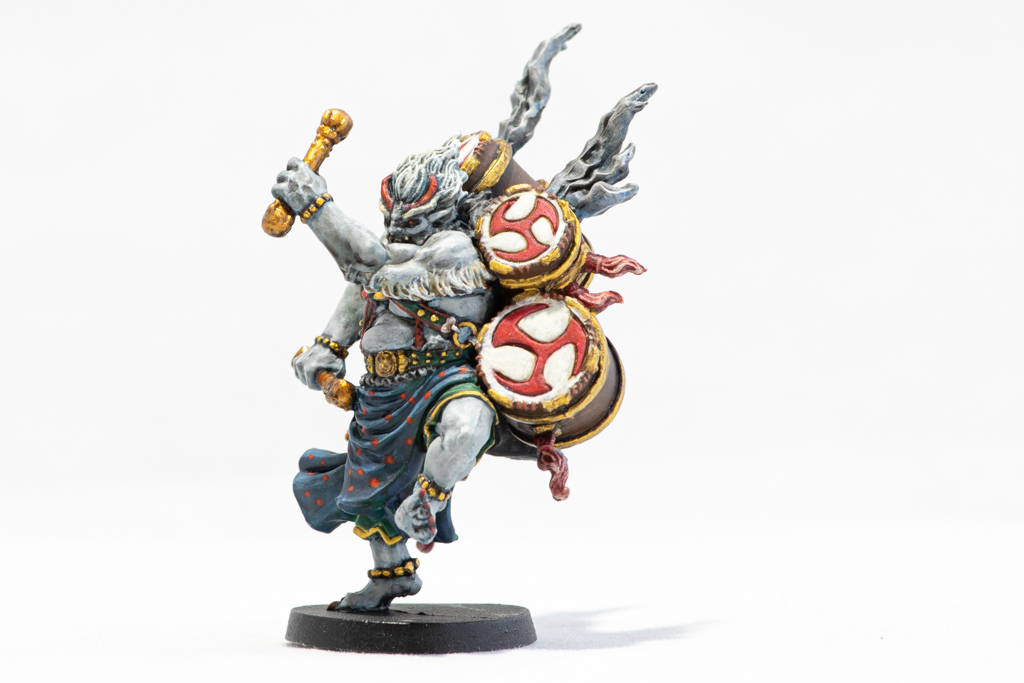
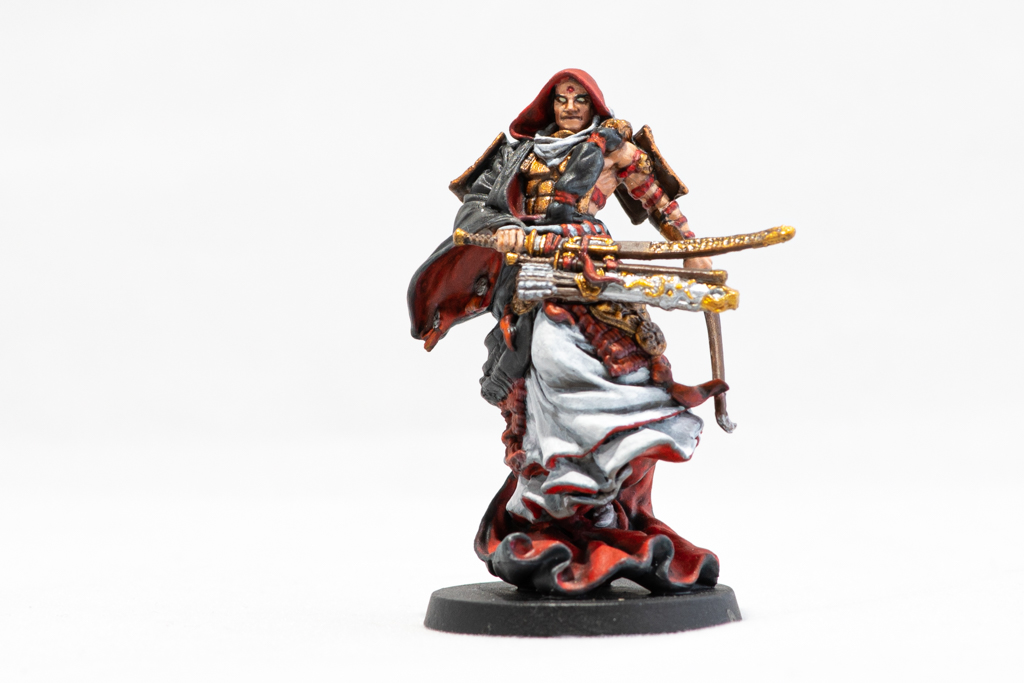
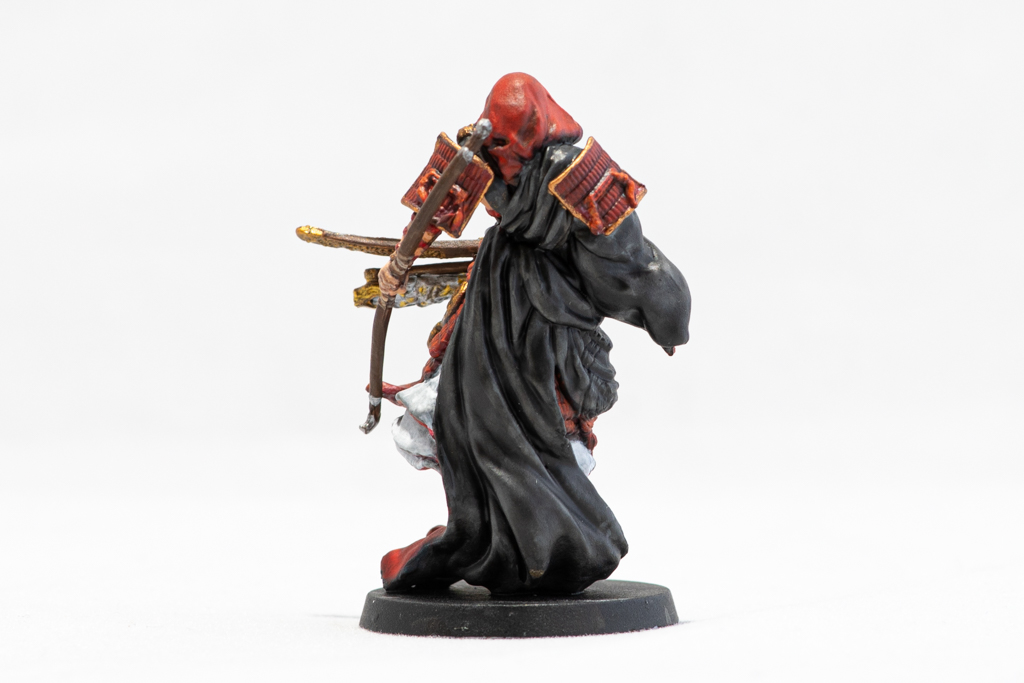
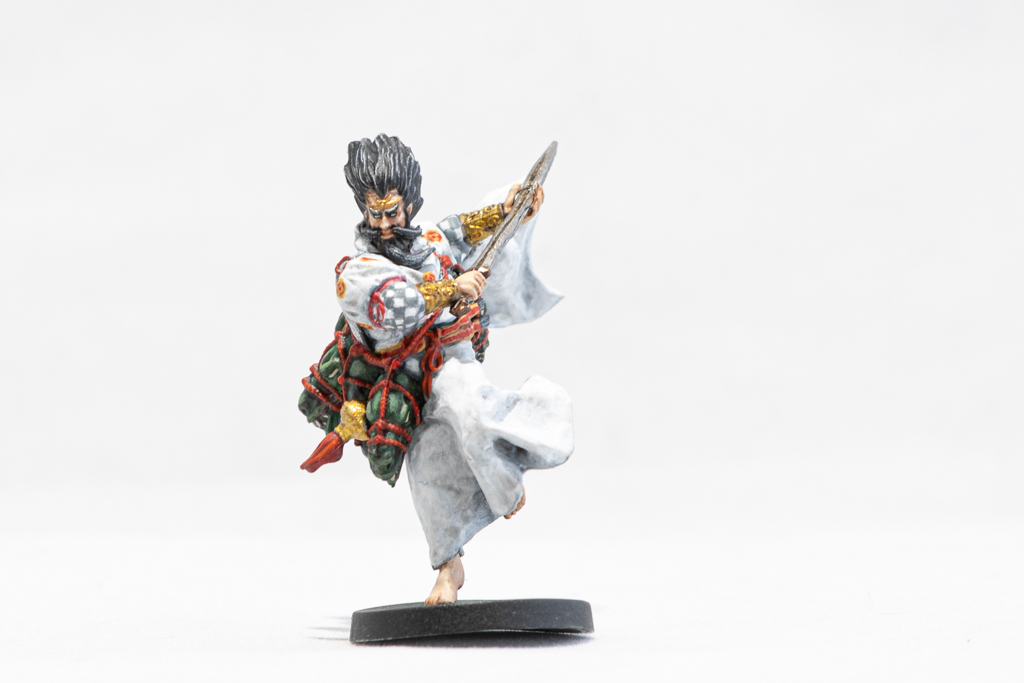
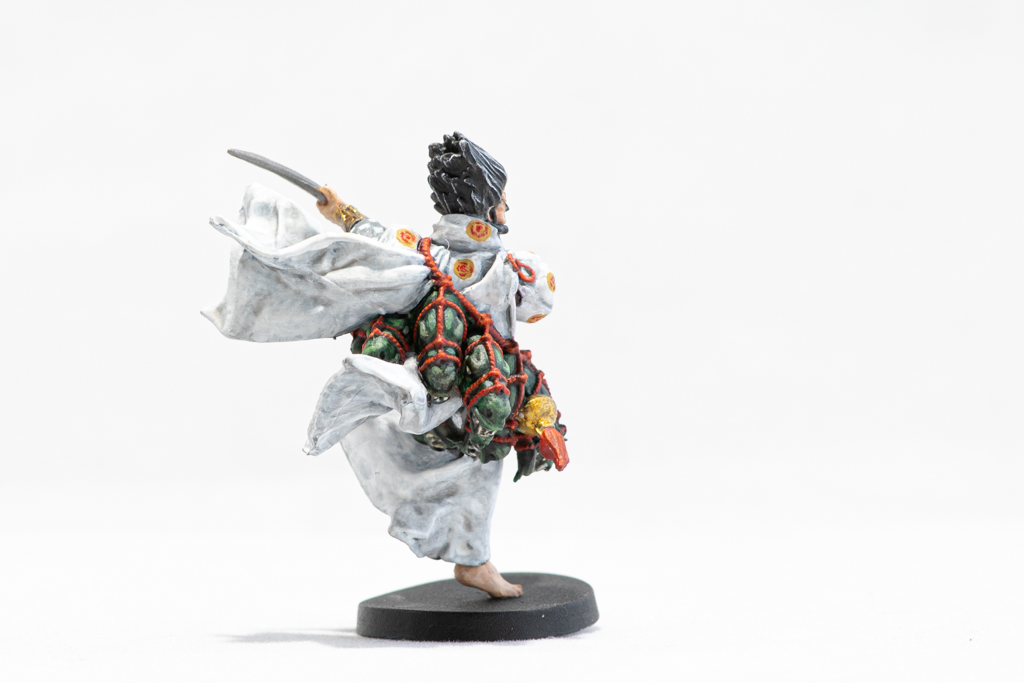
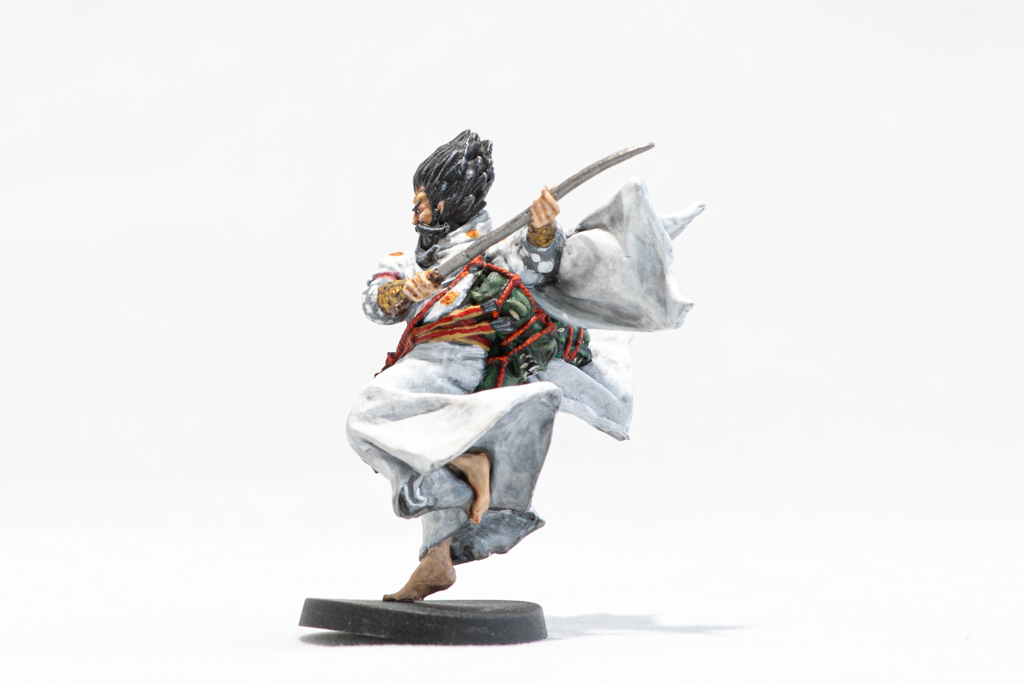
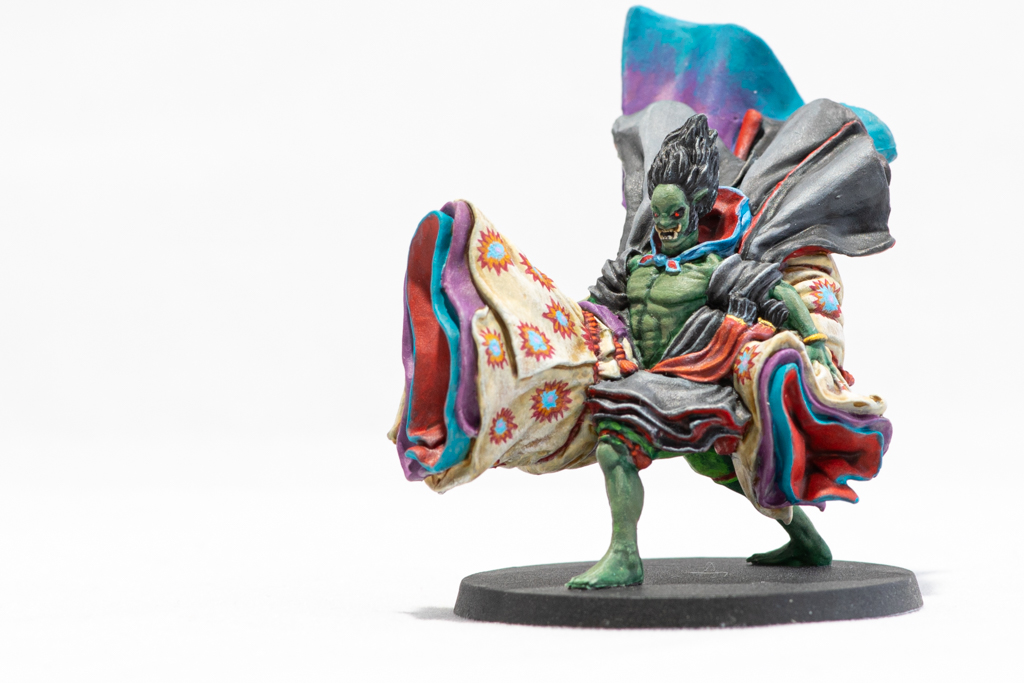
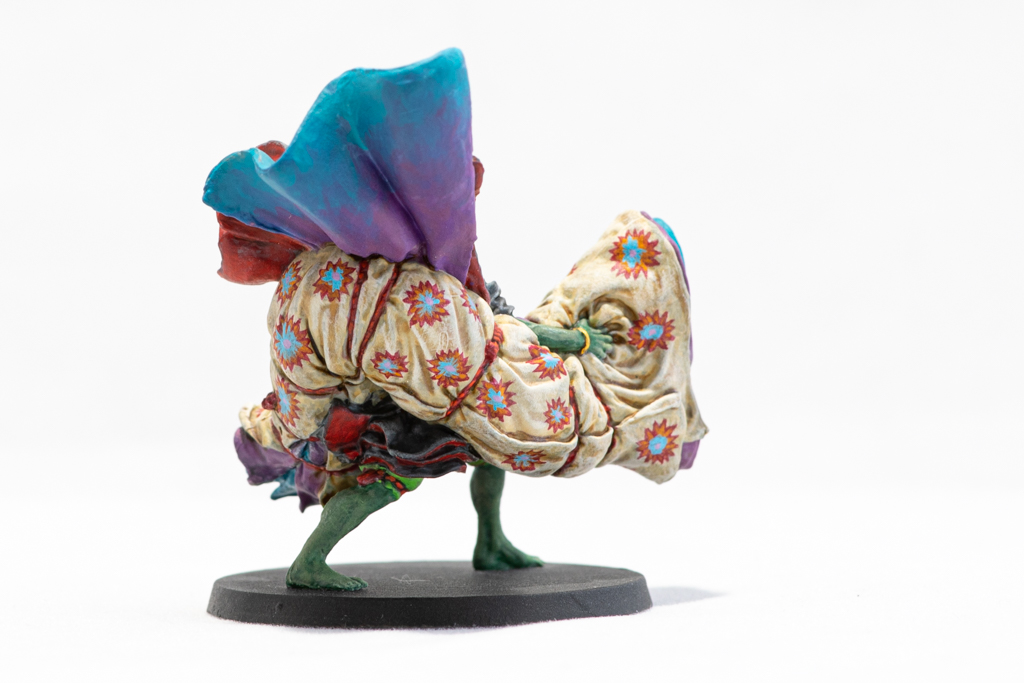
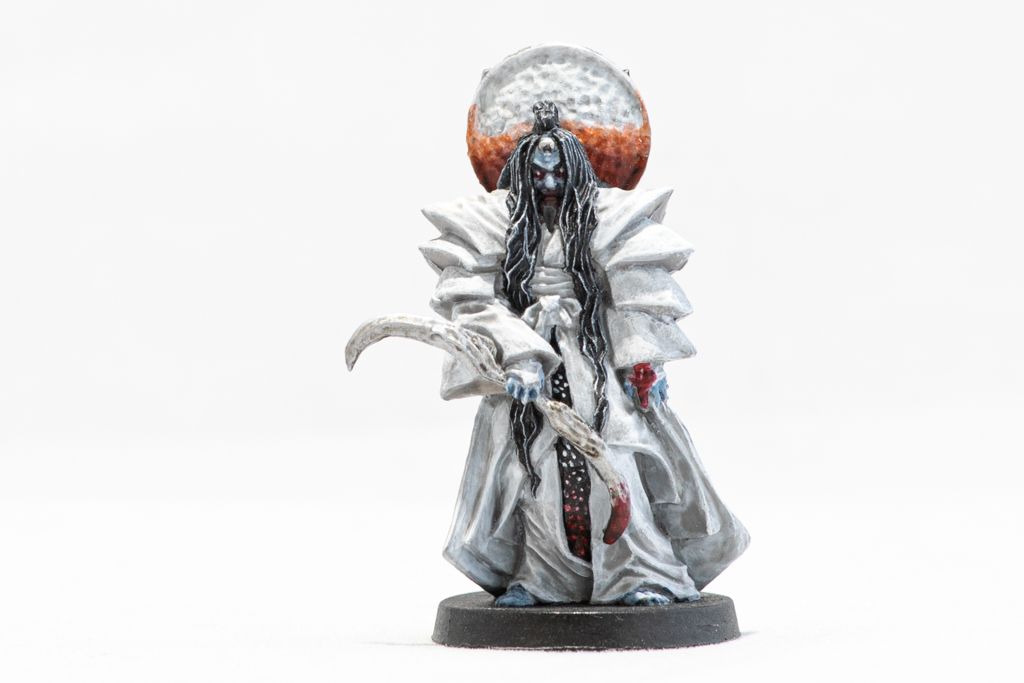
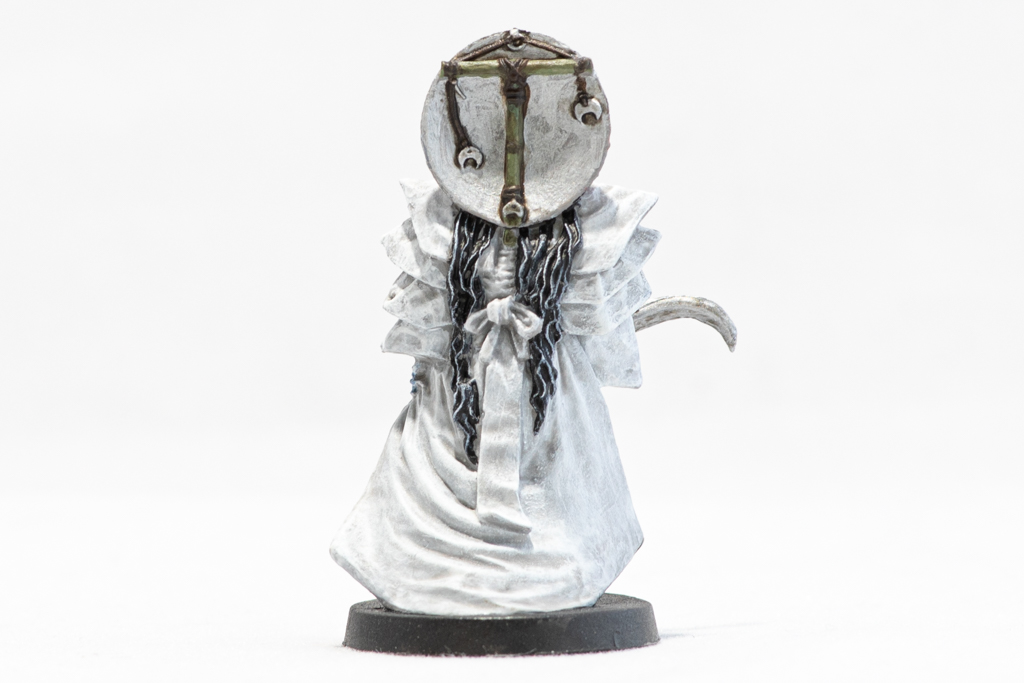
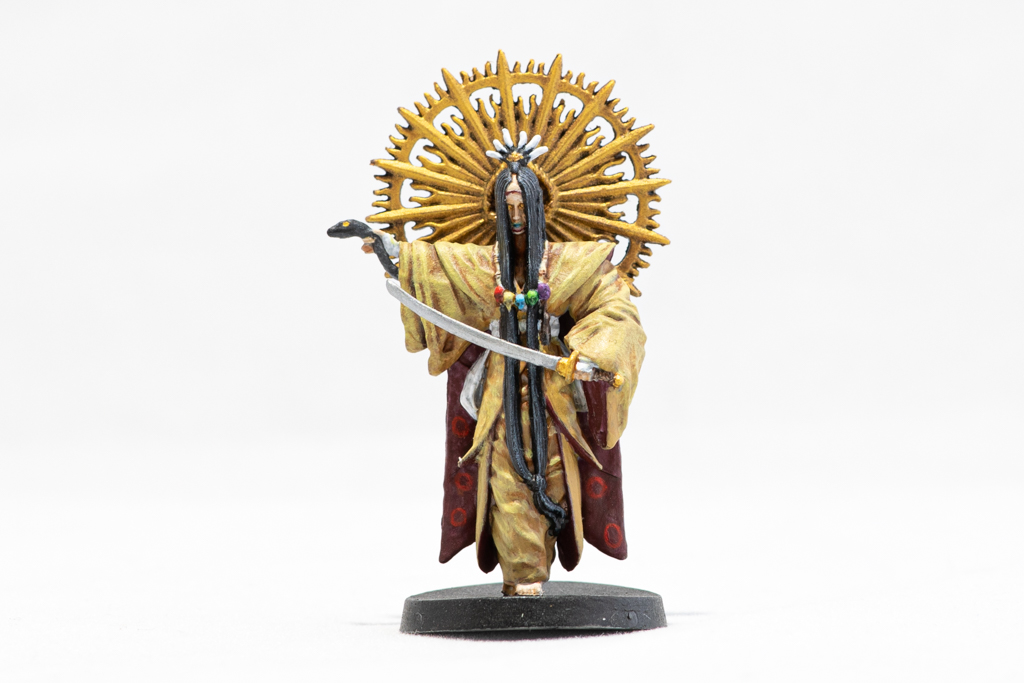
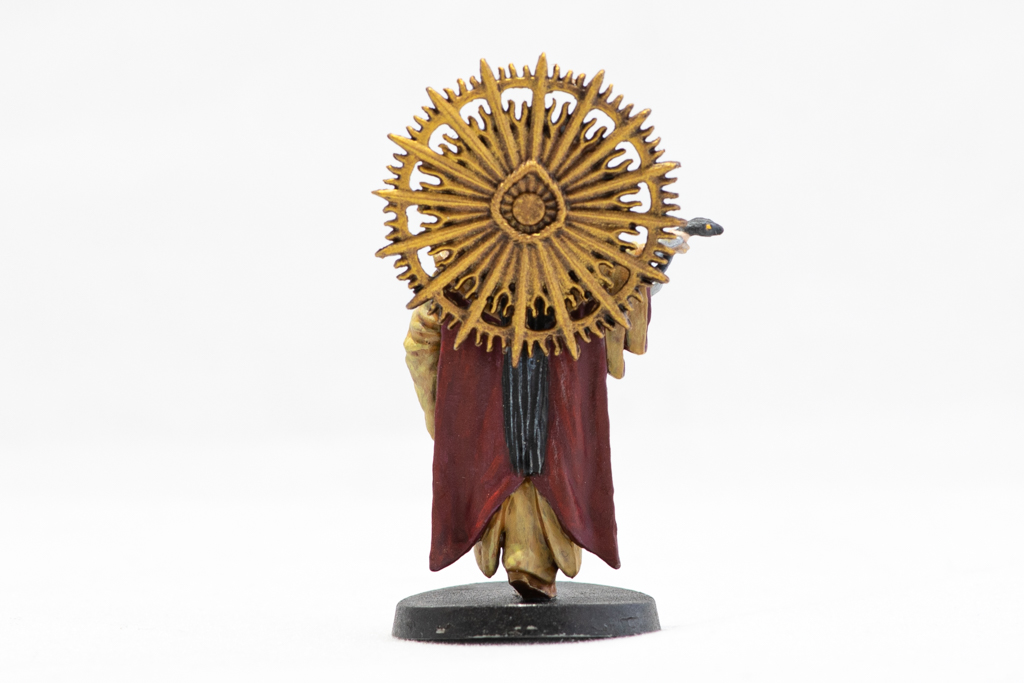
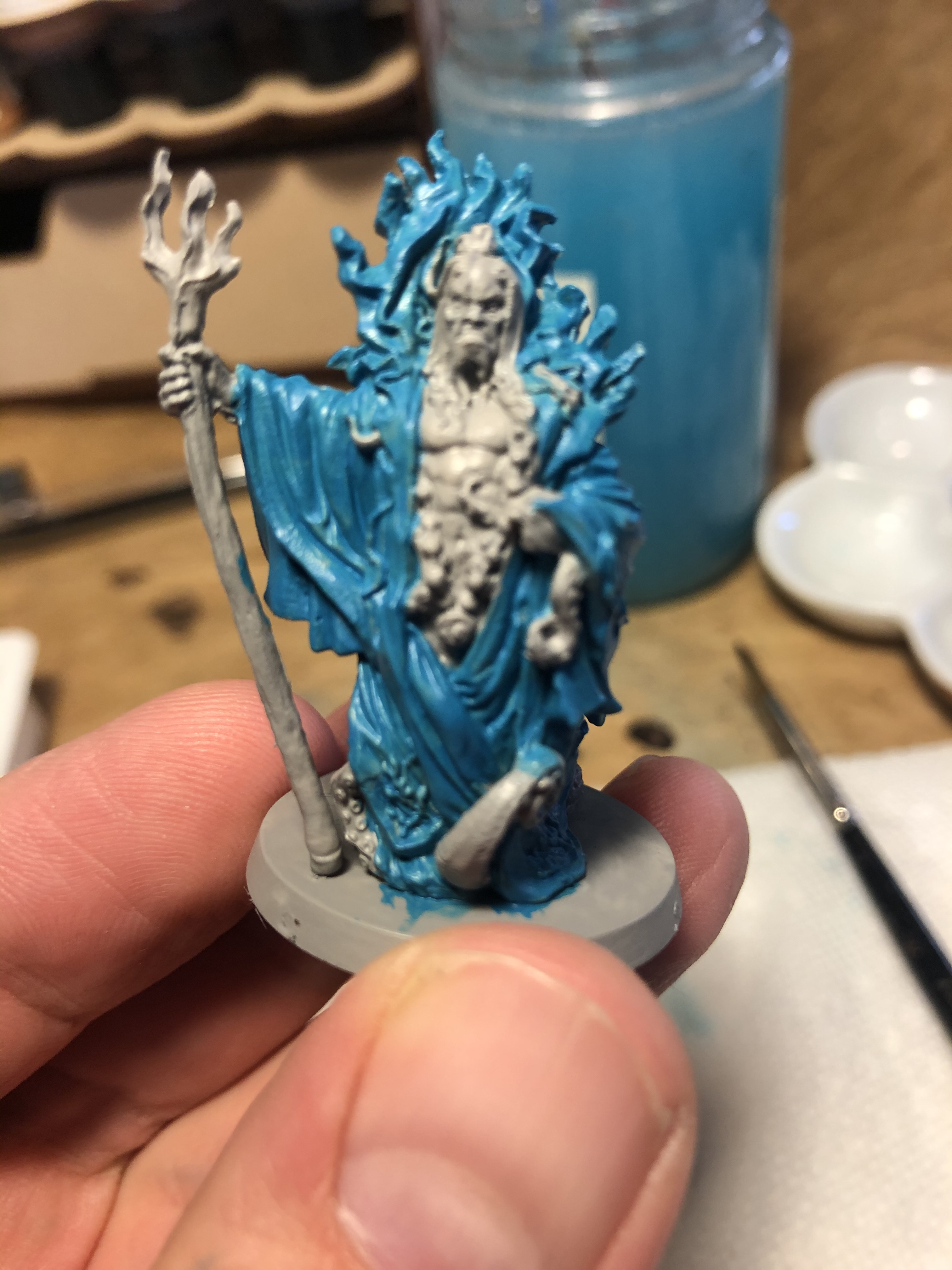
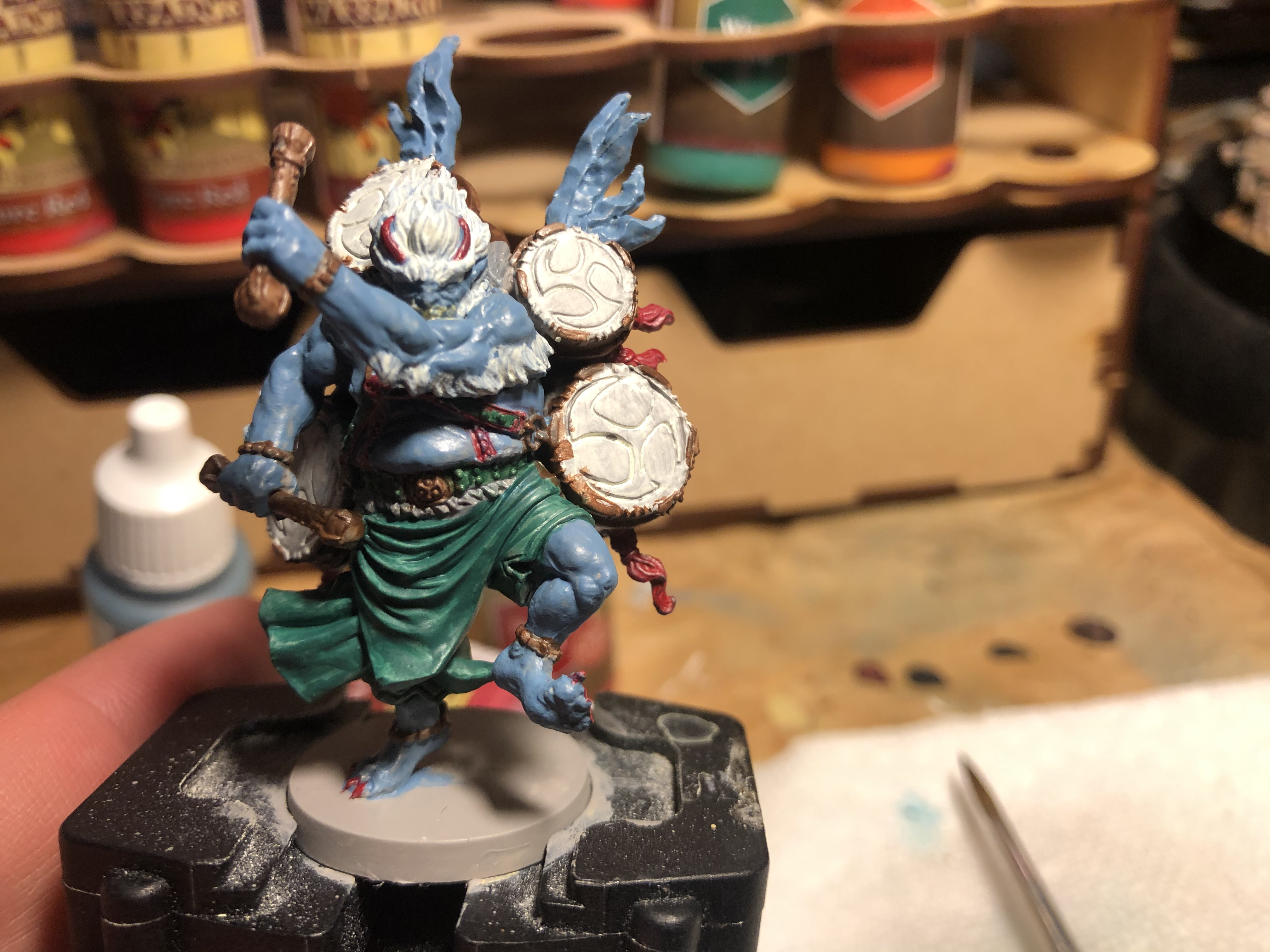
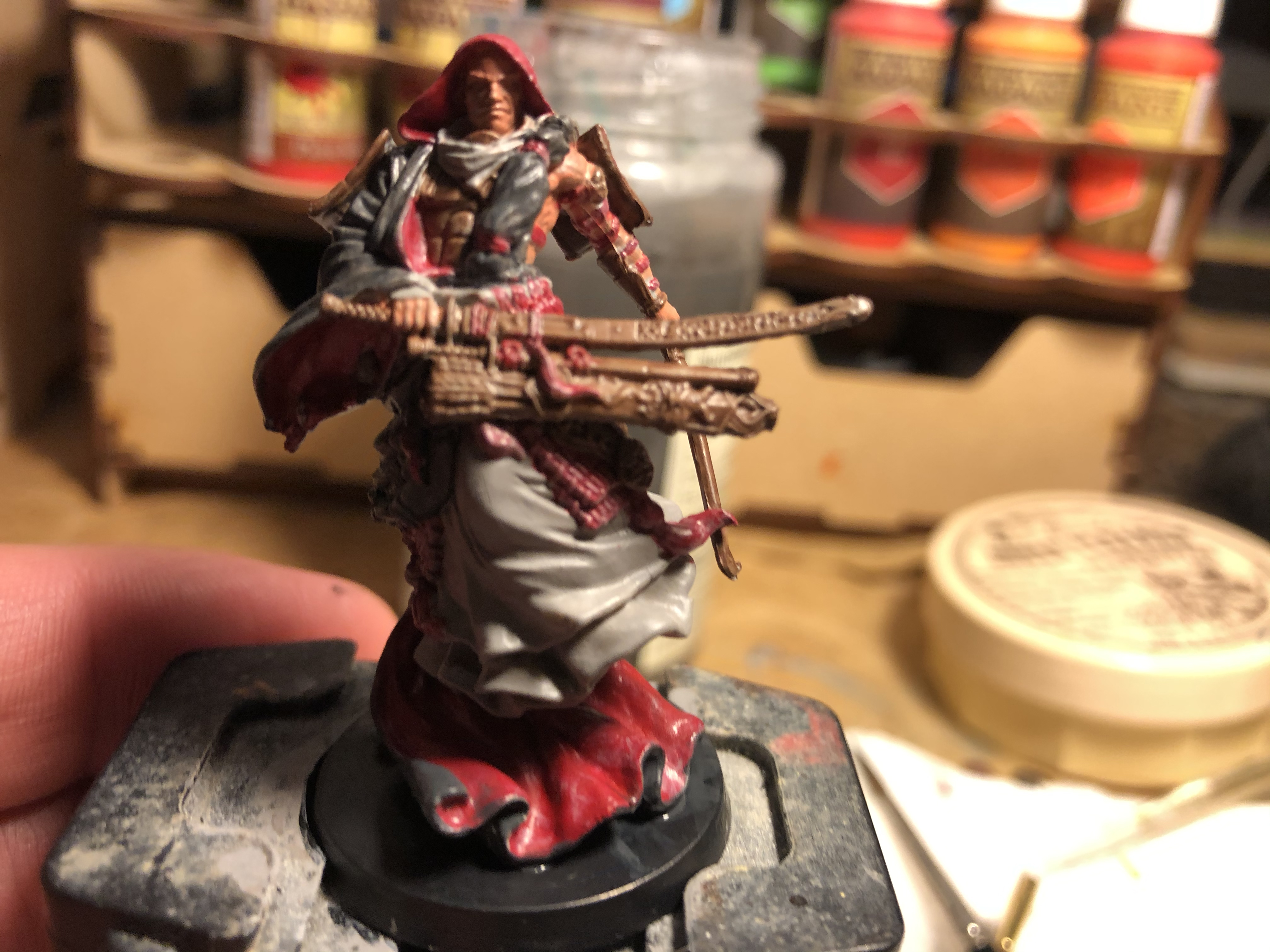
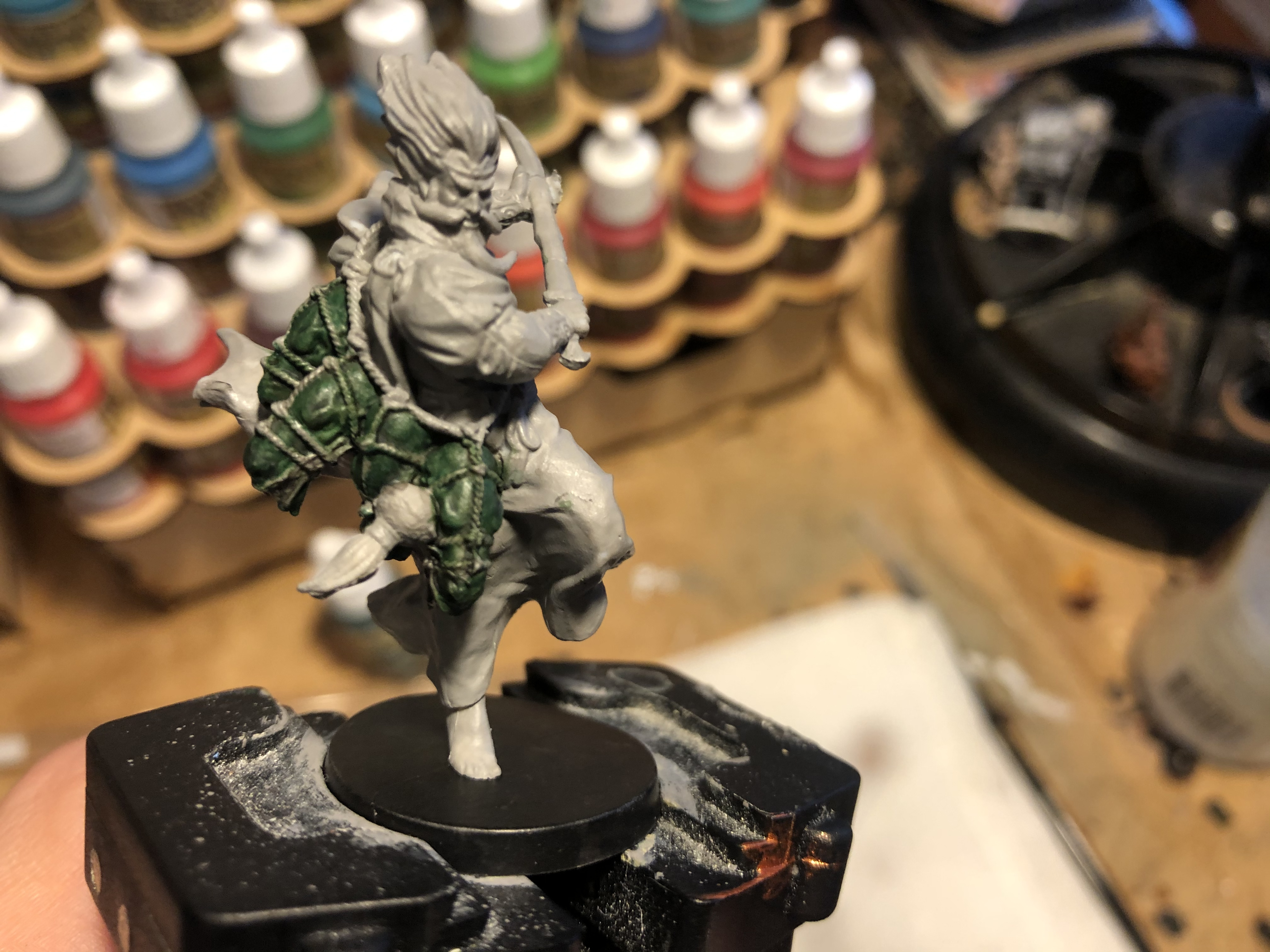
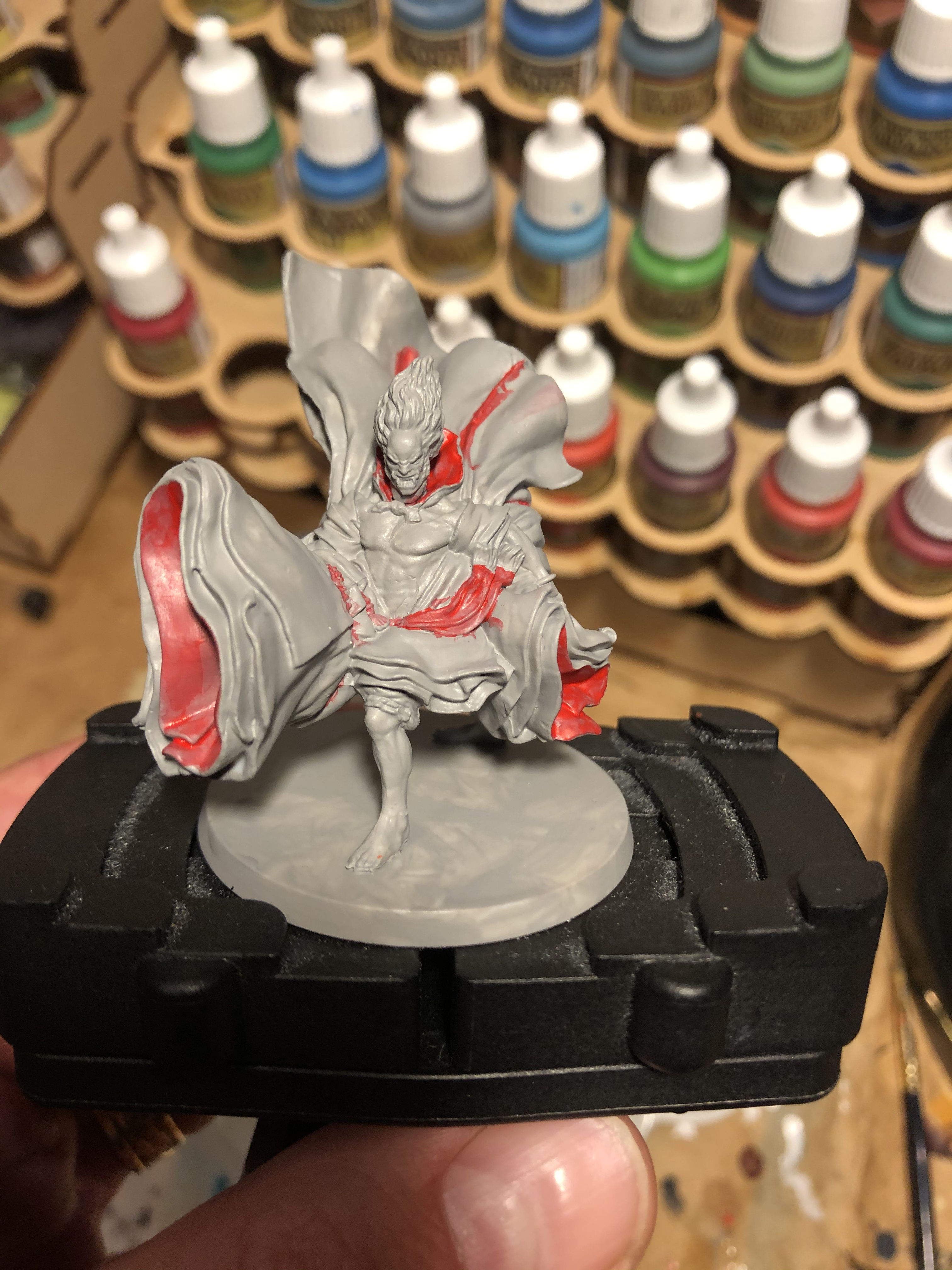
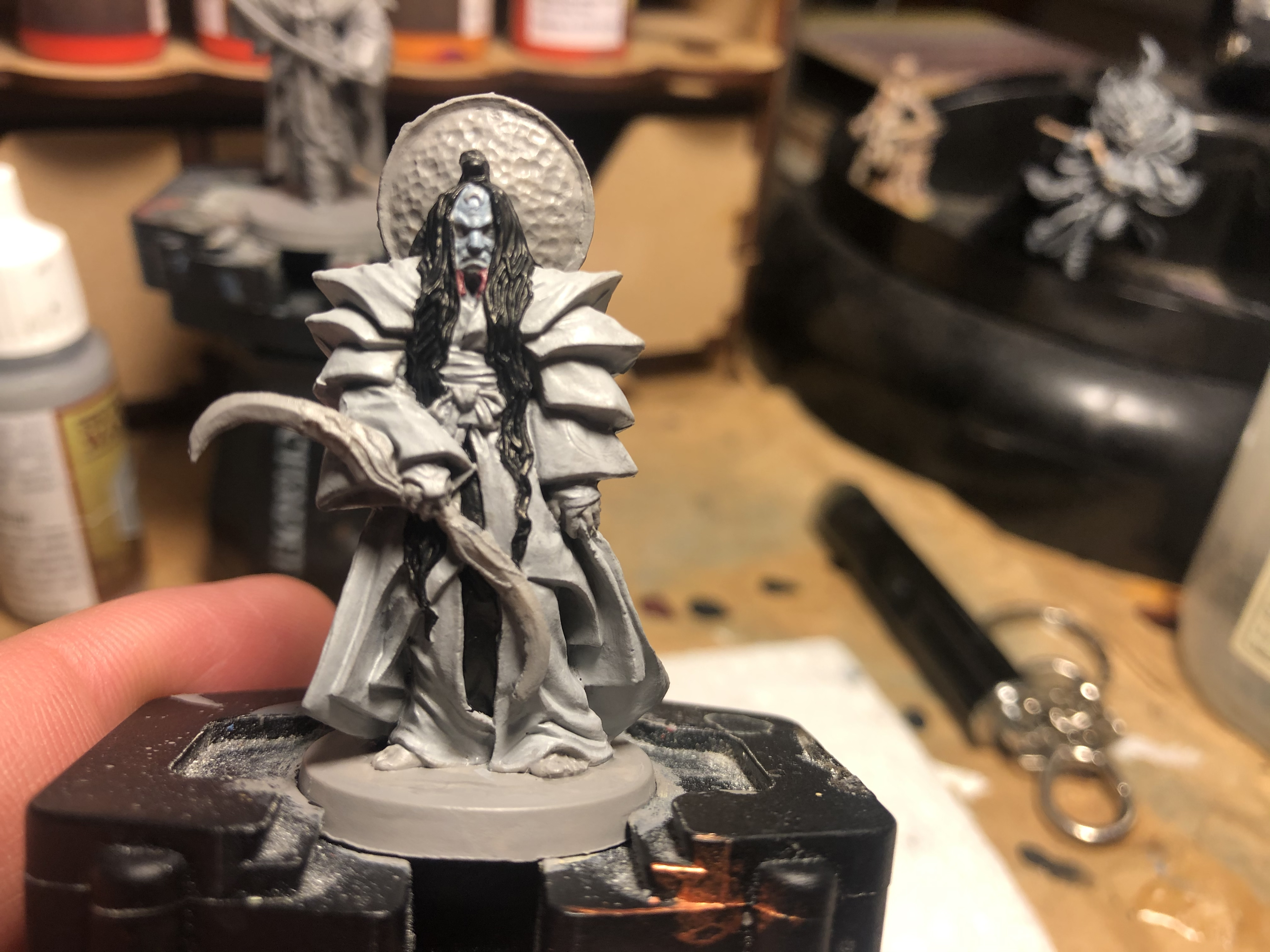
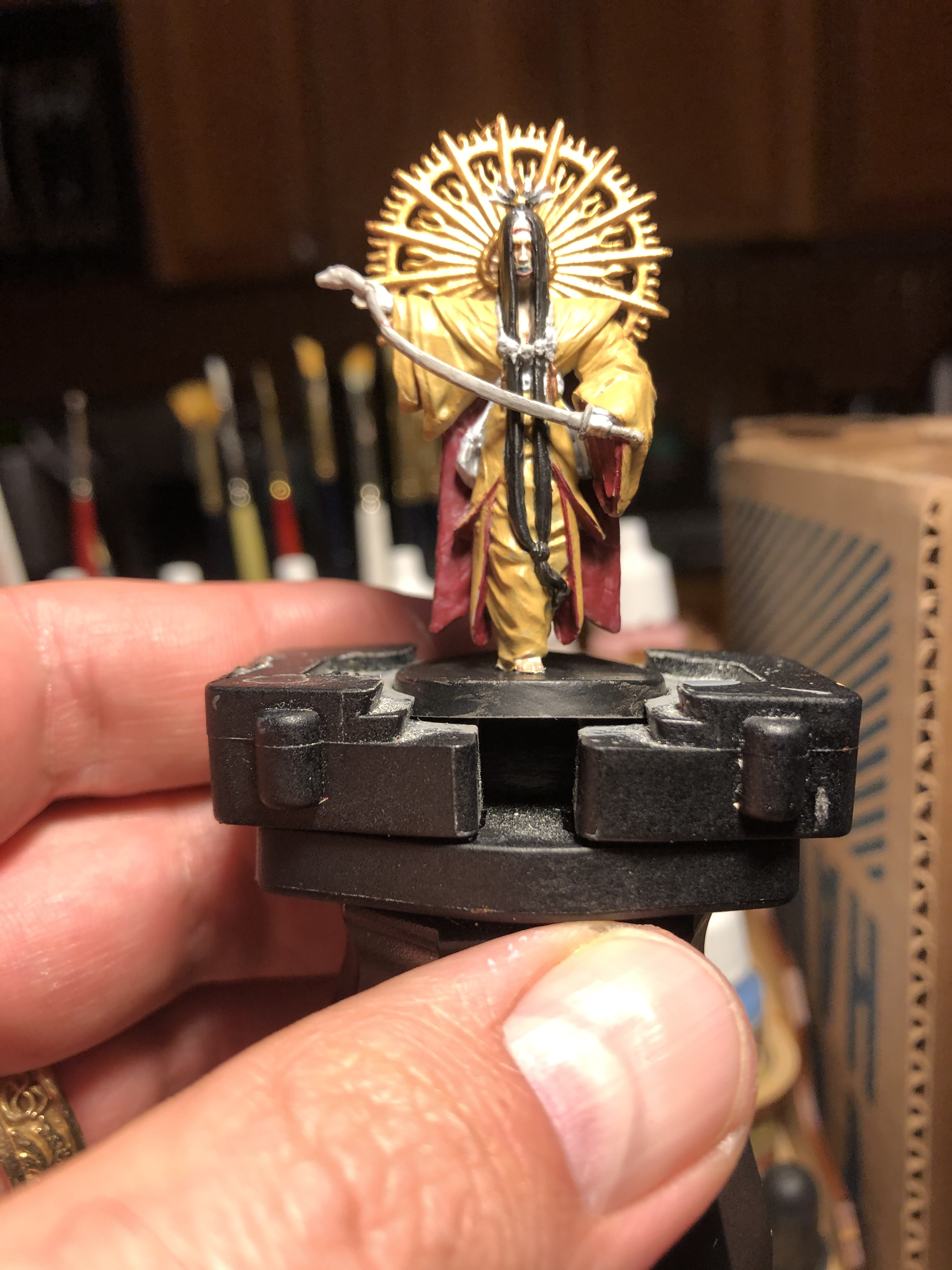

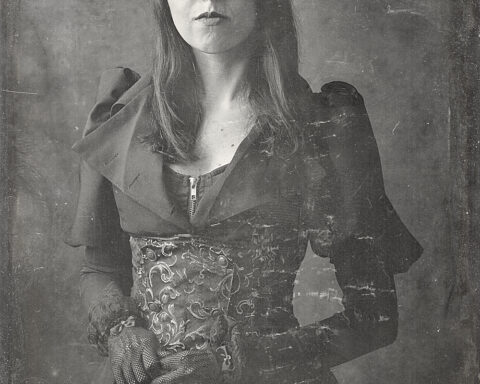
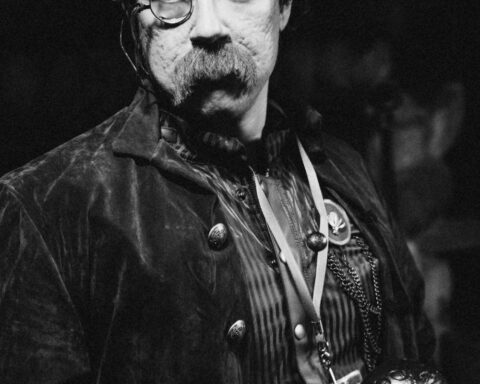
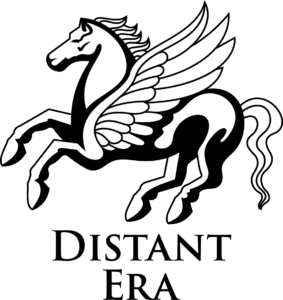
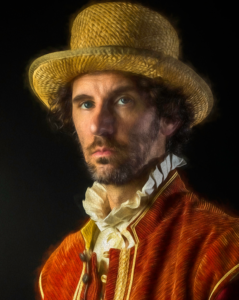
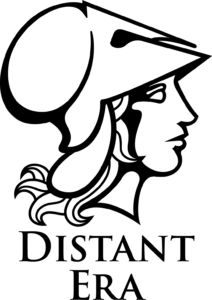
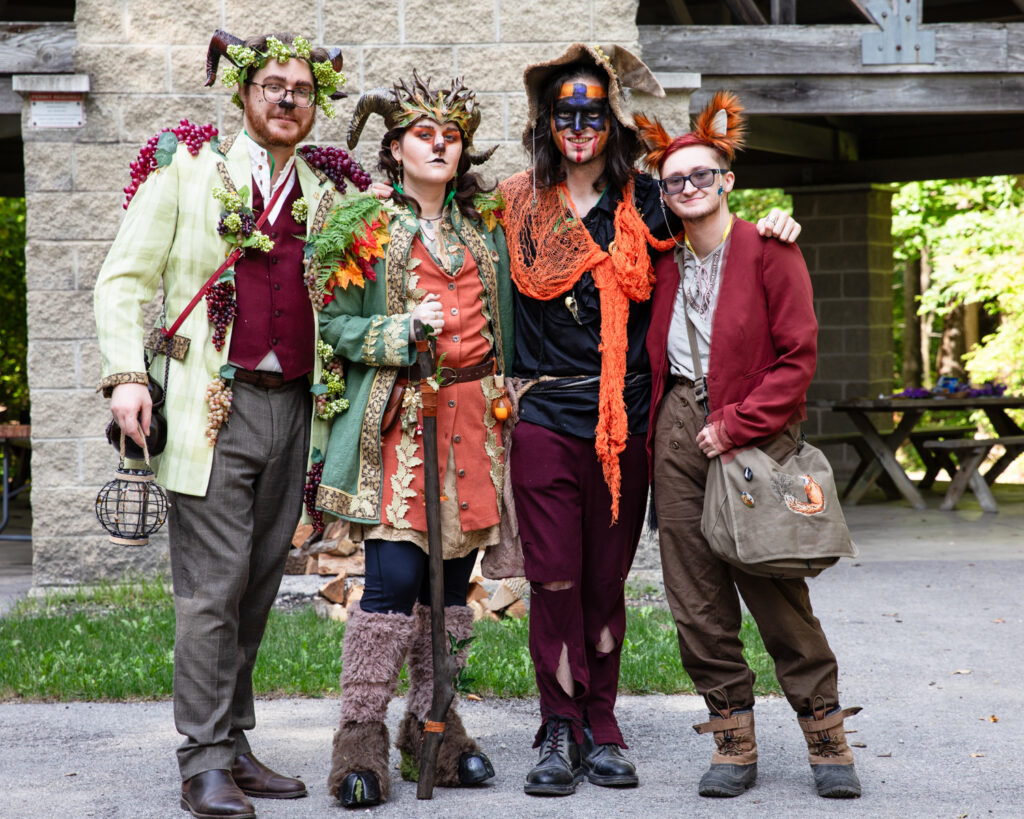
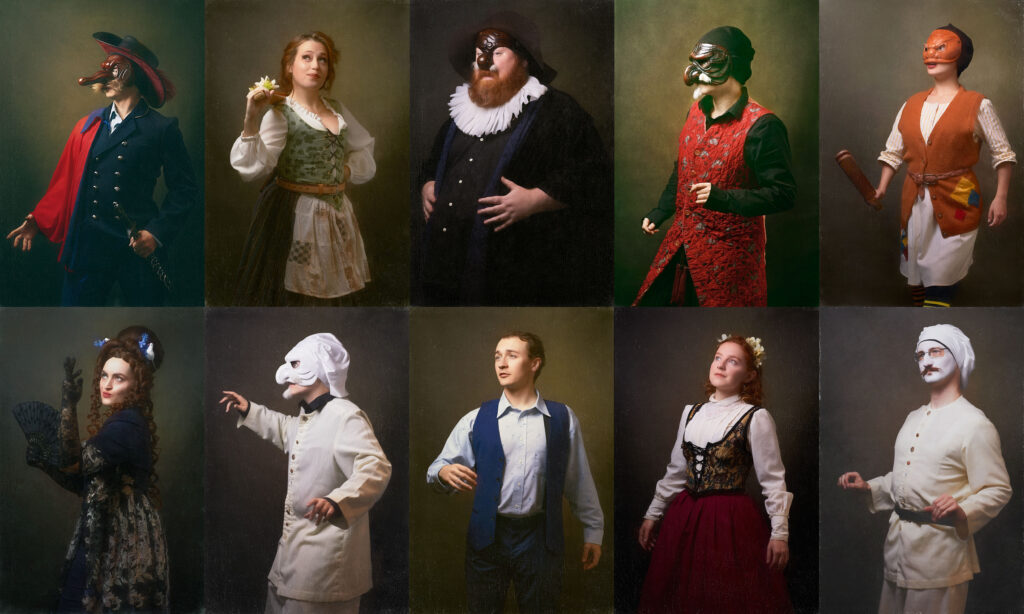
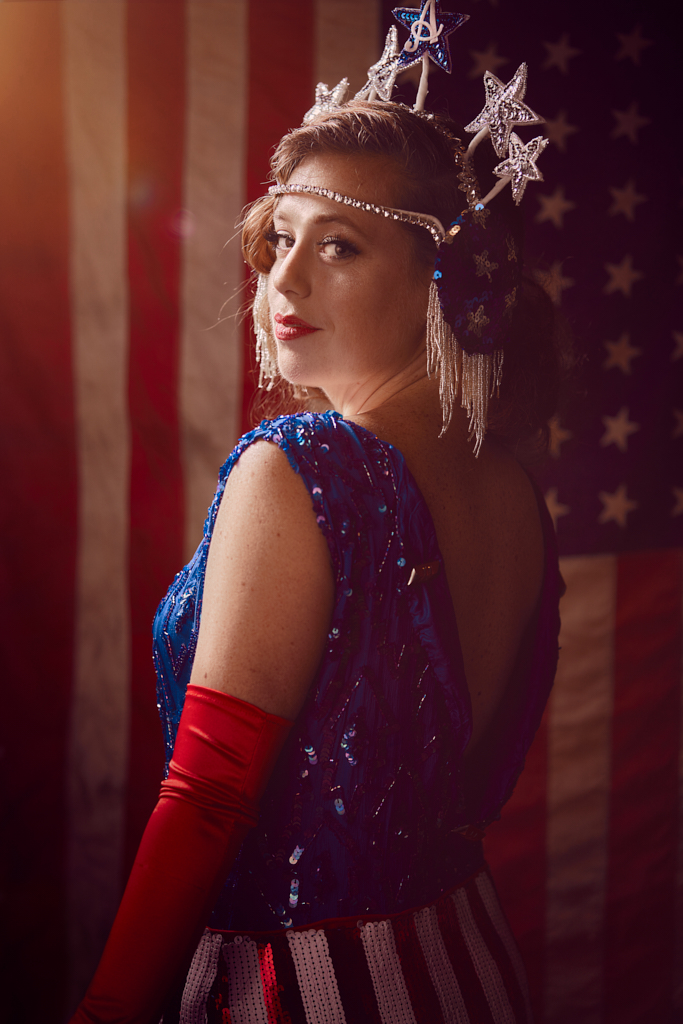
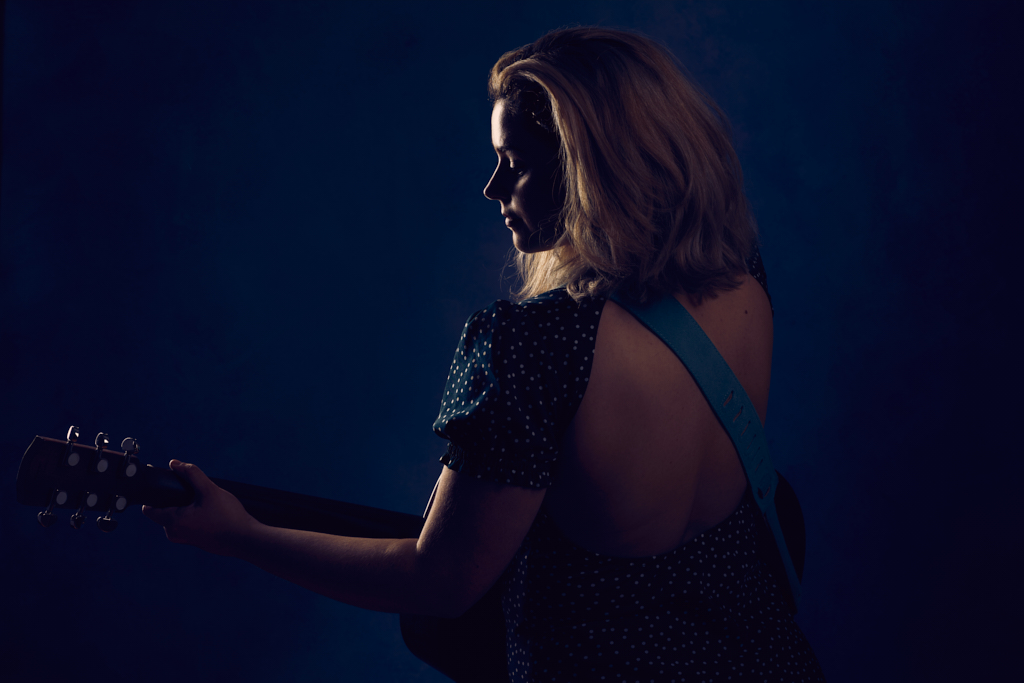
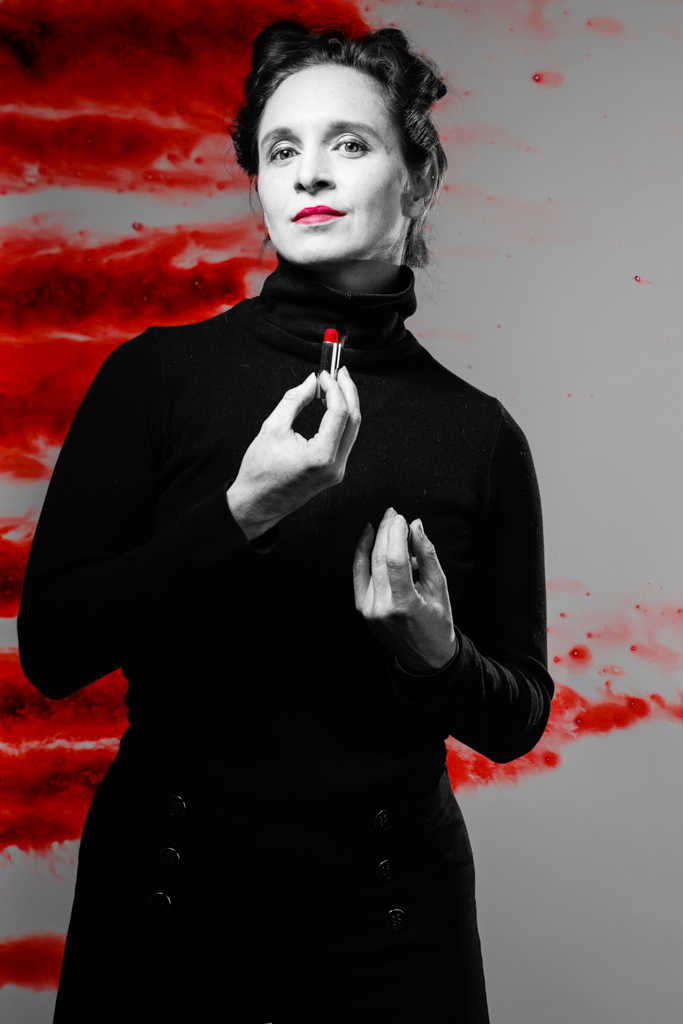
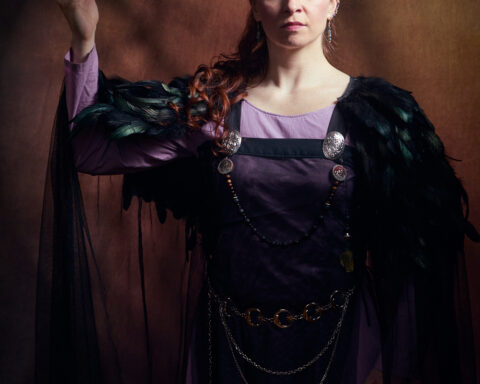

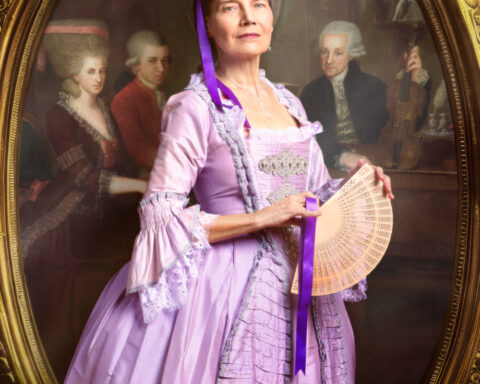
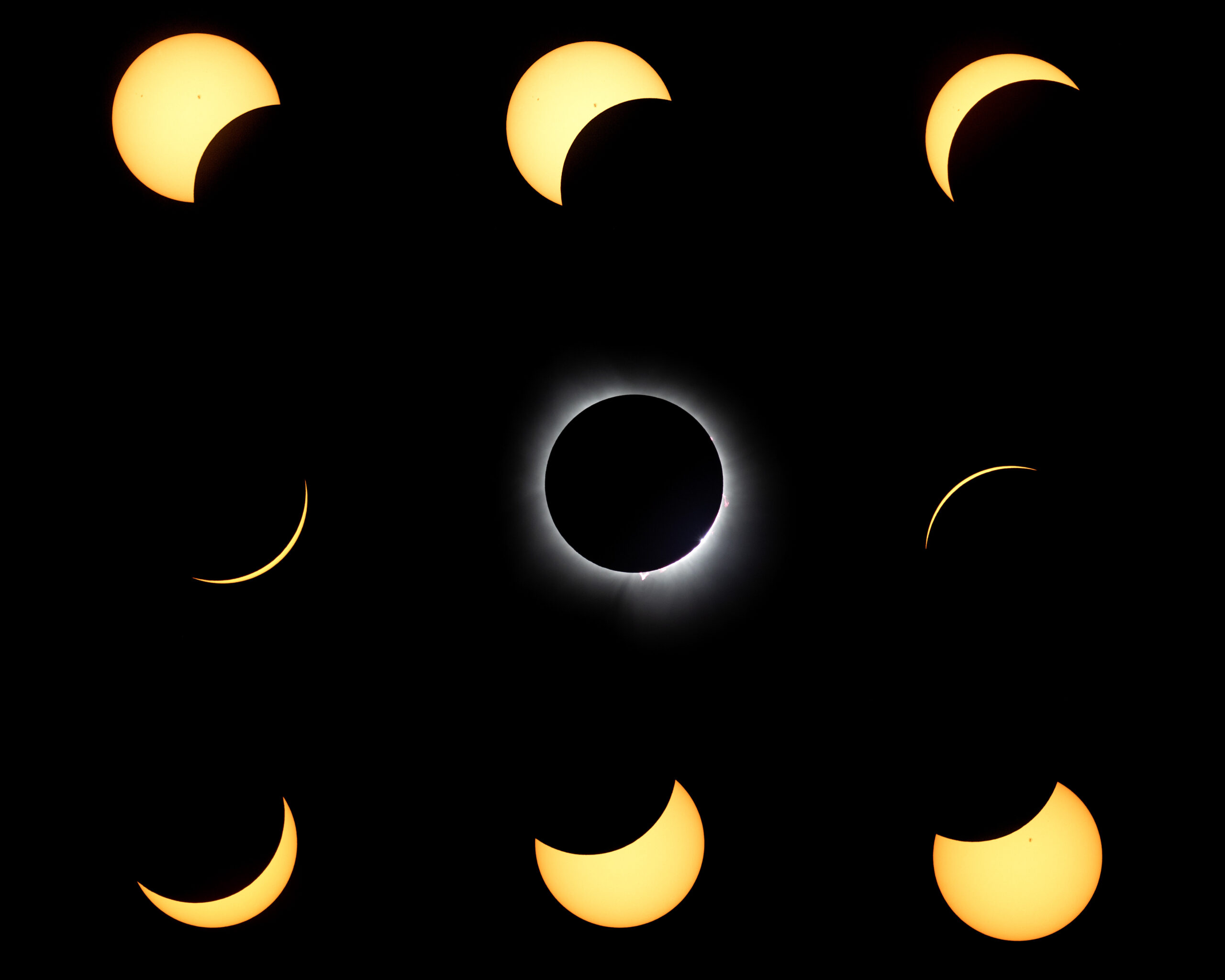
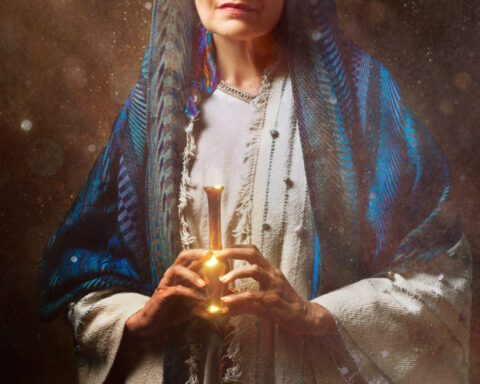
Follow Me